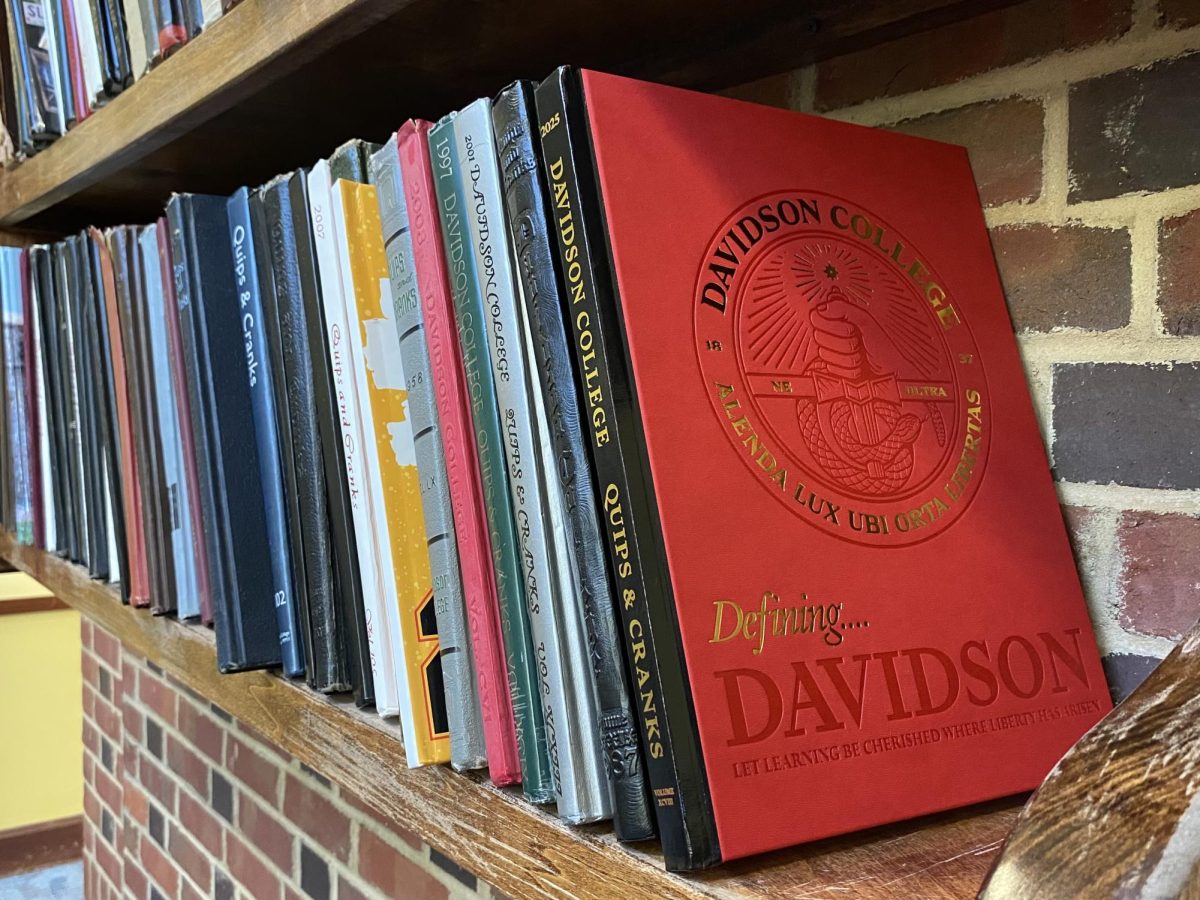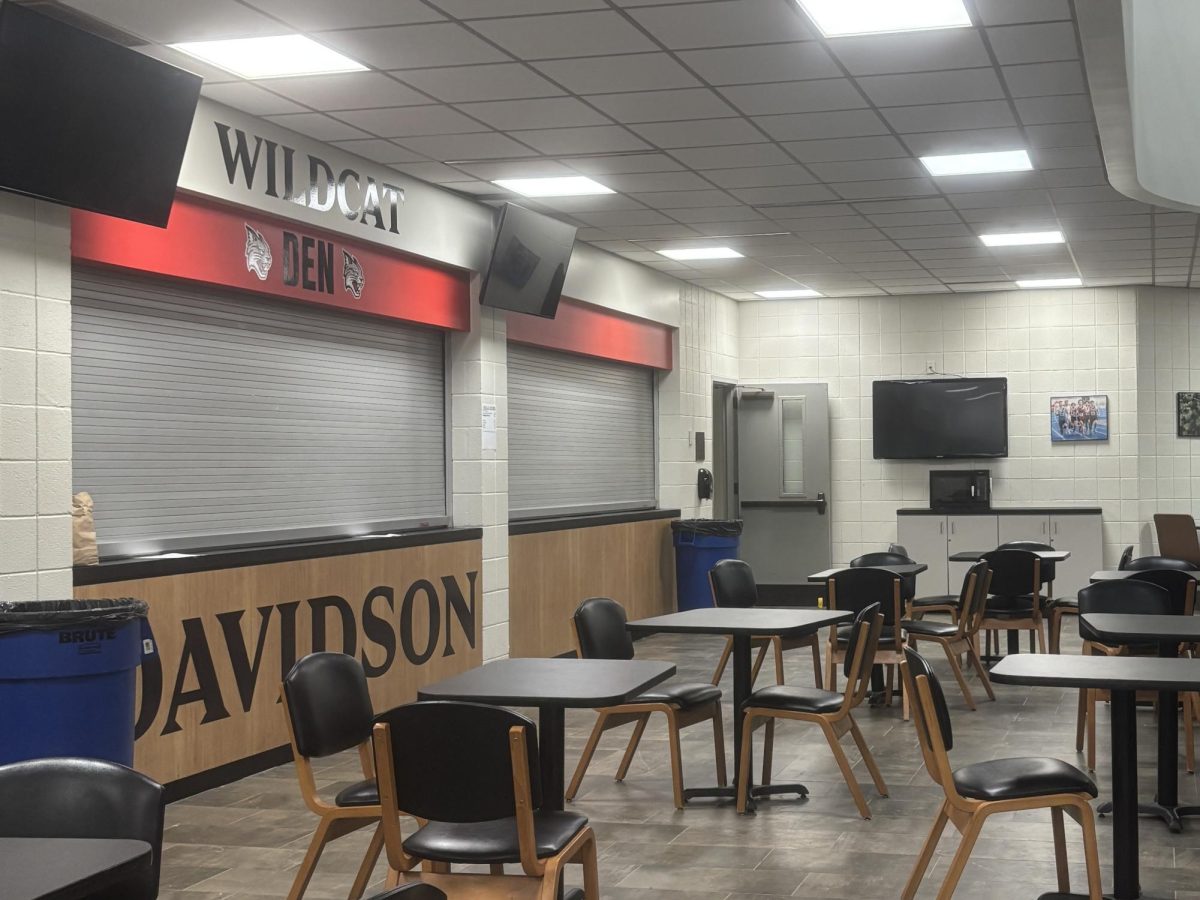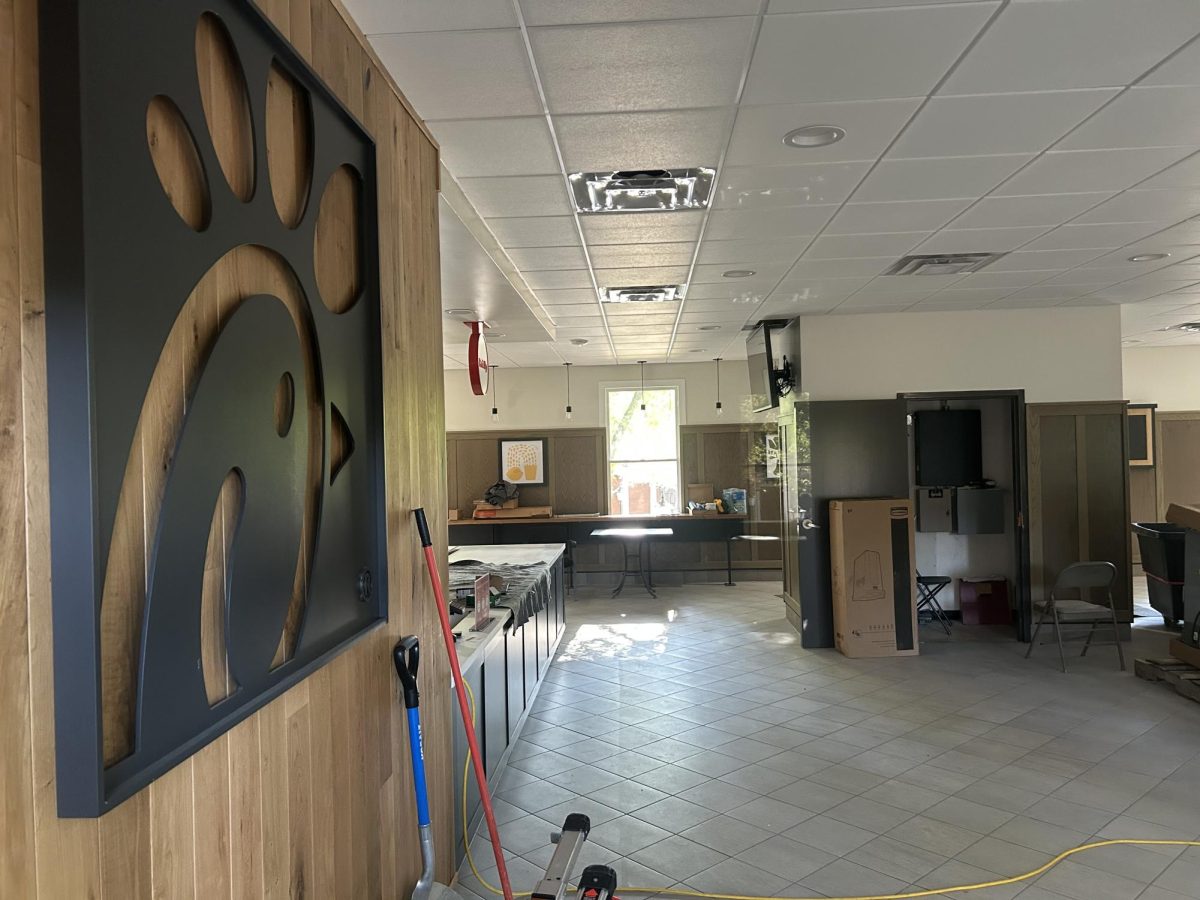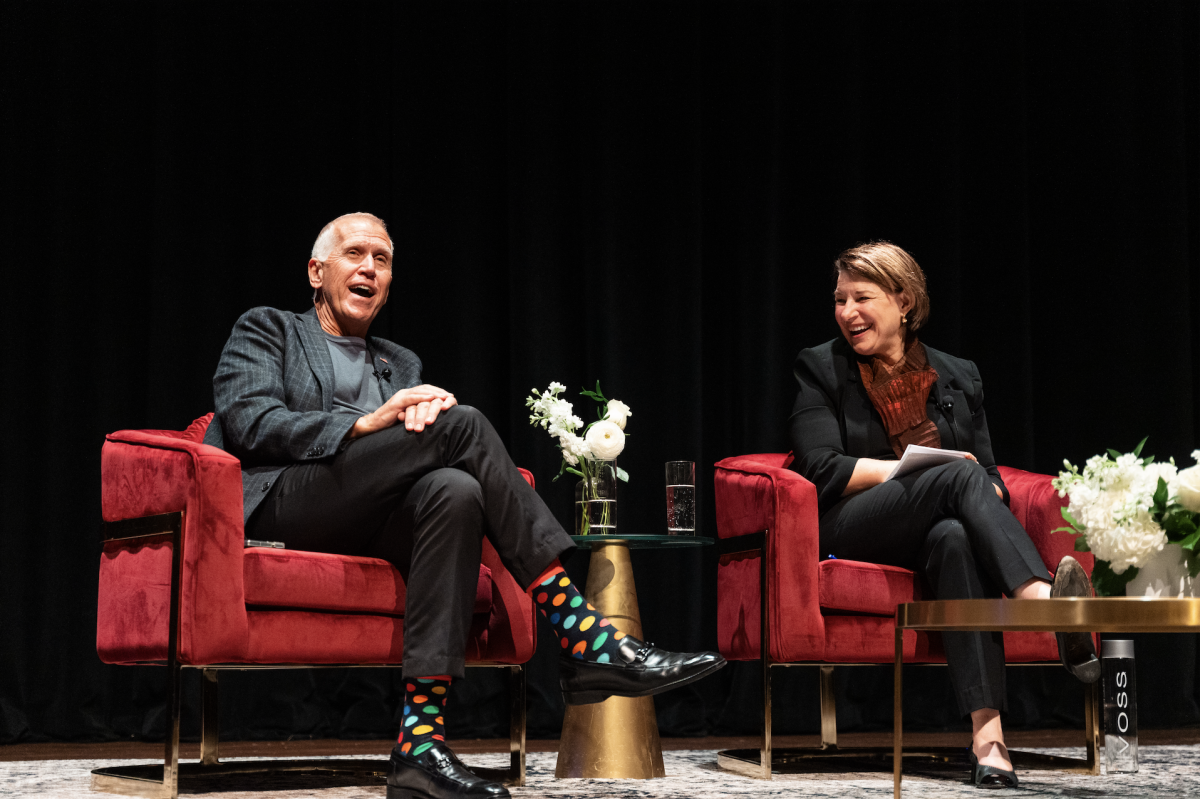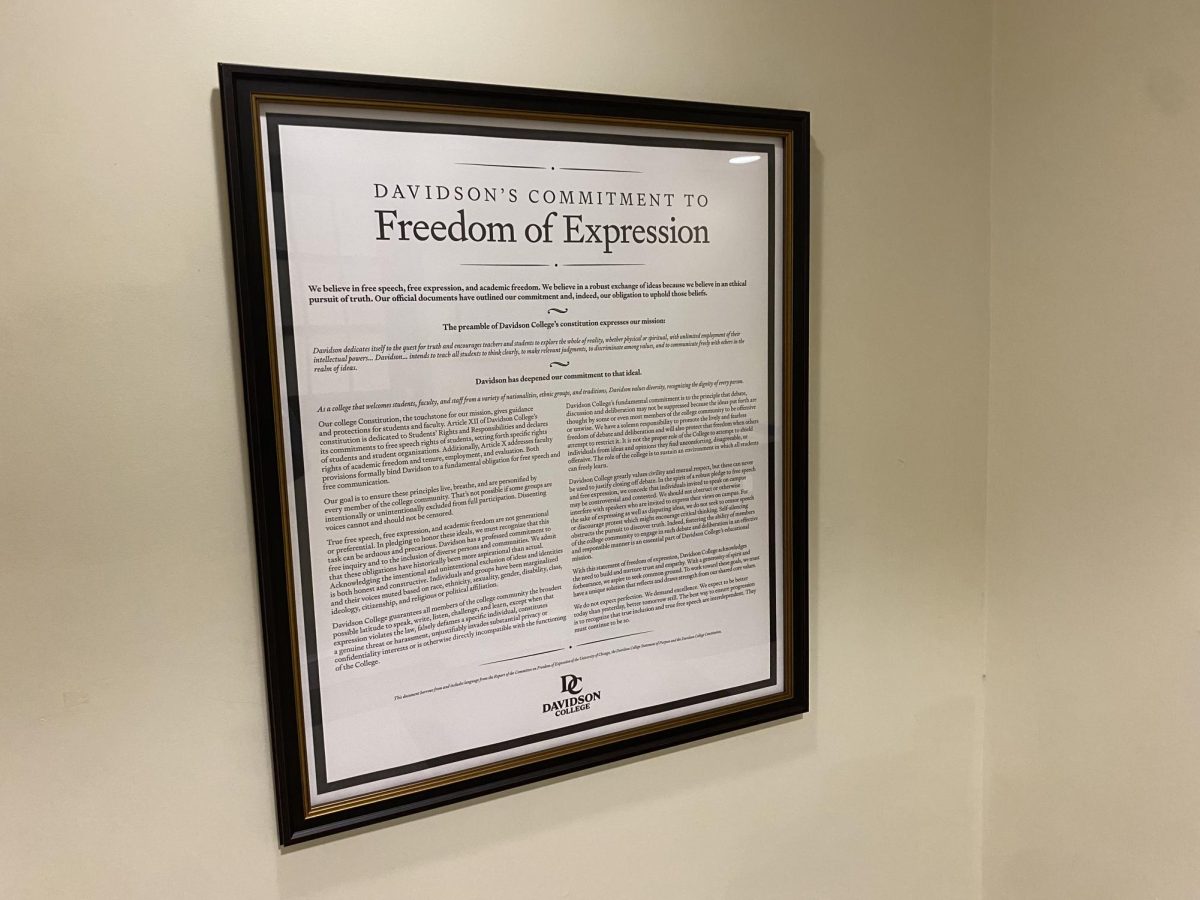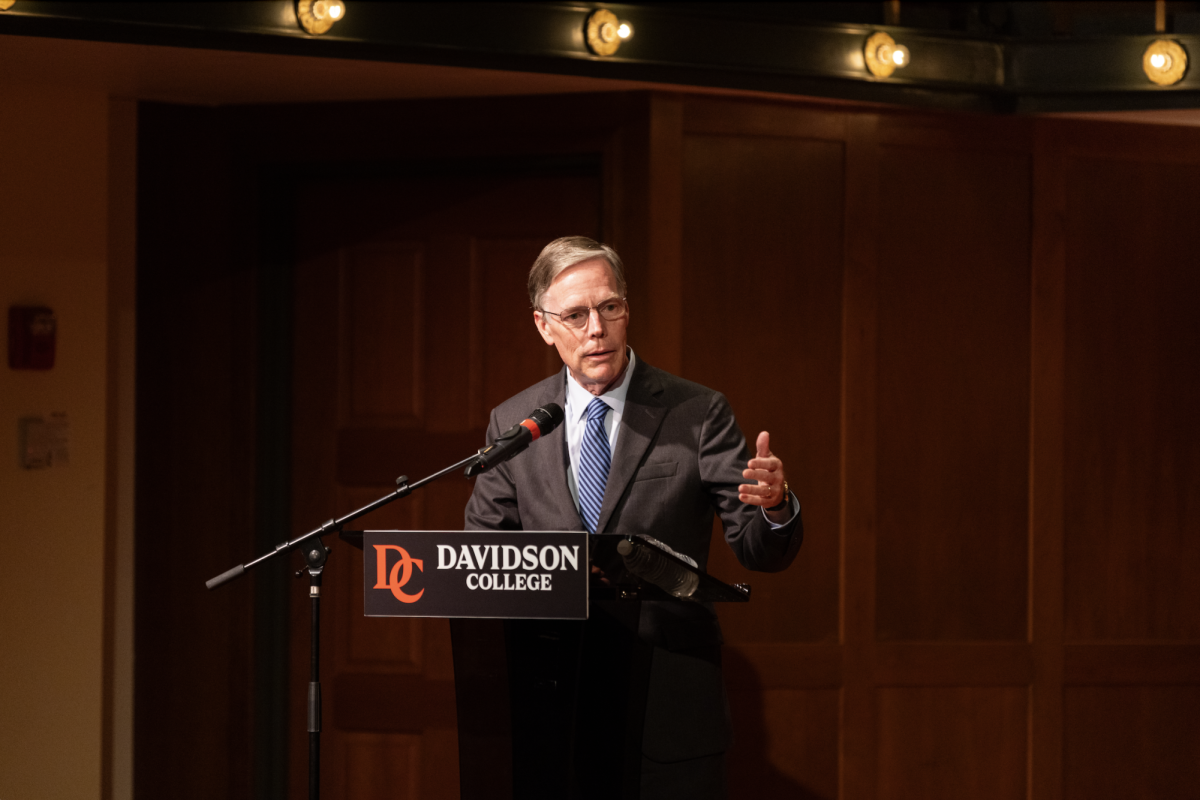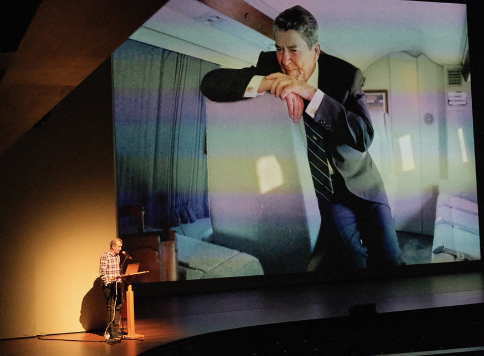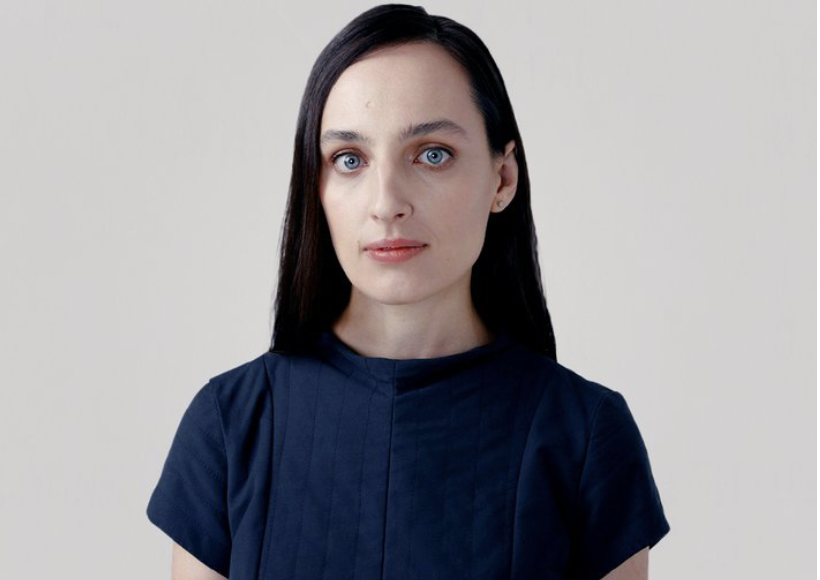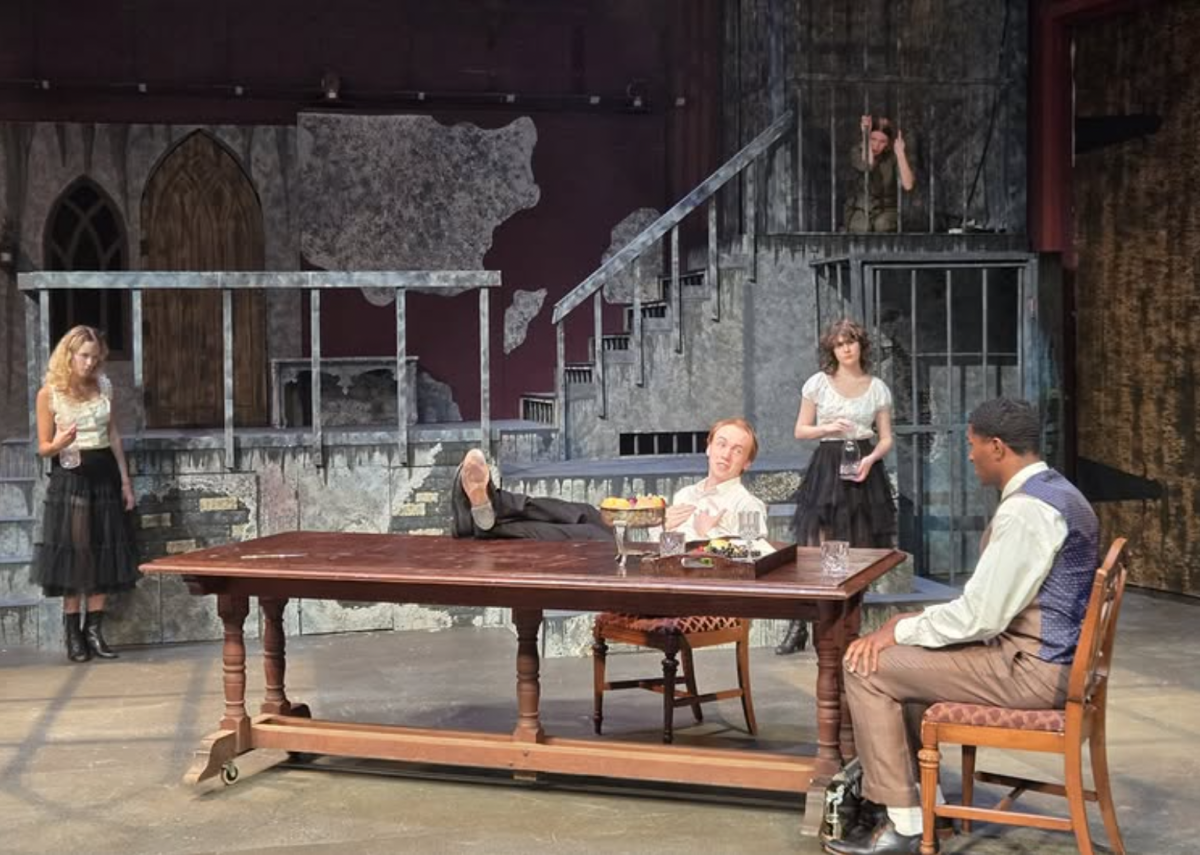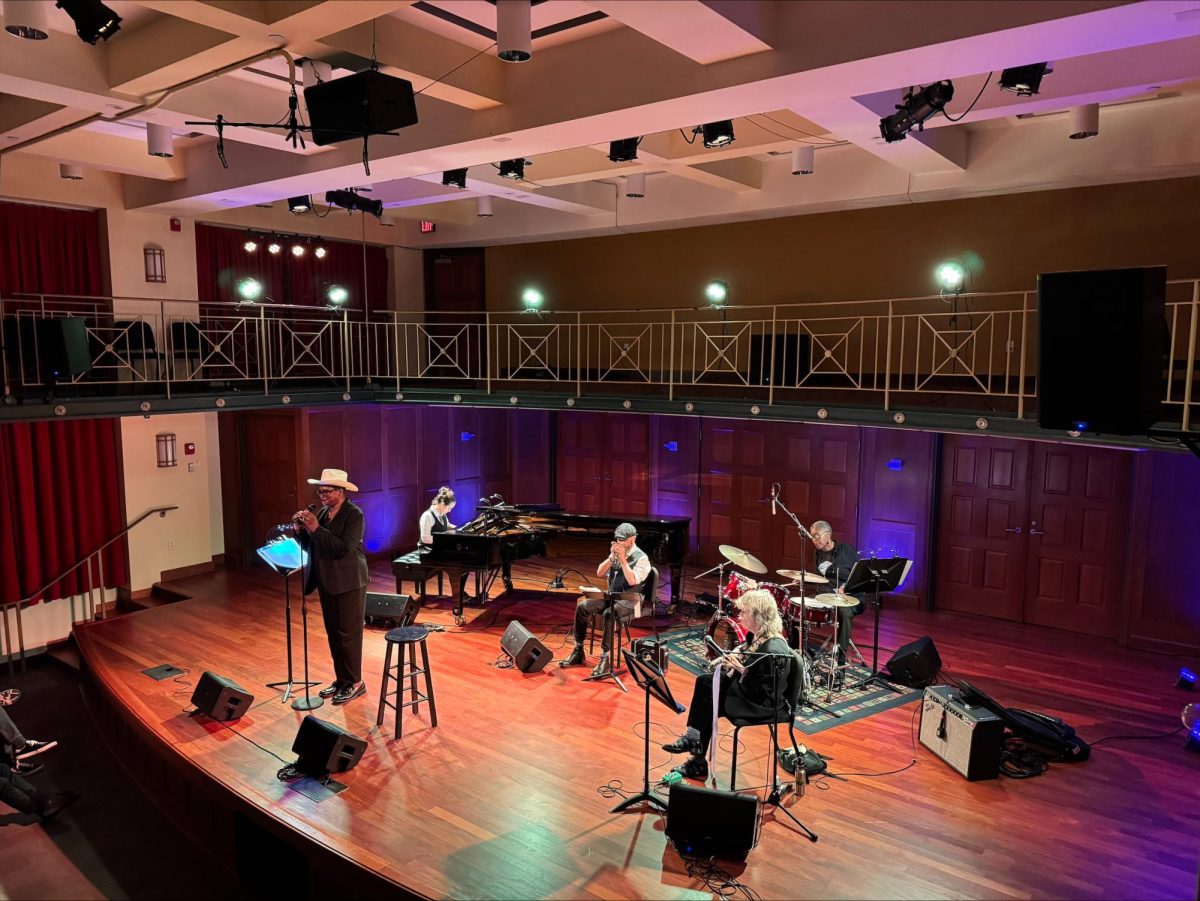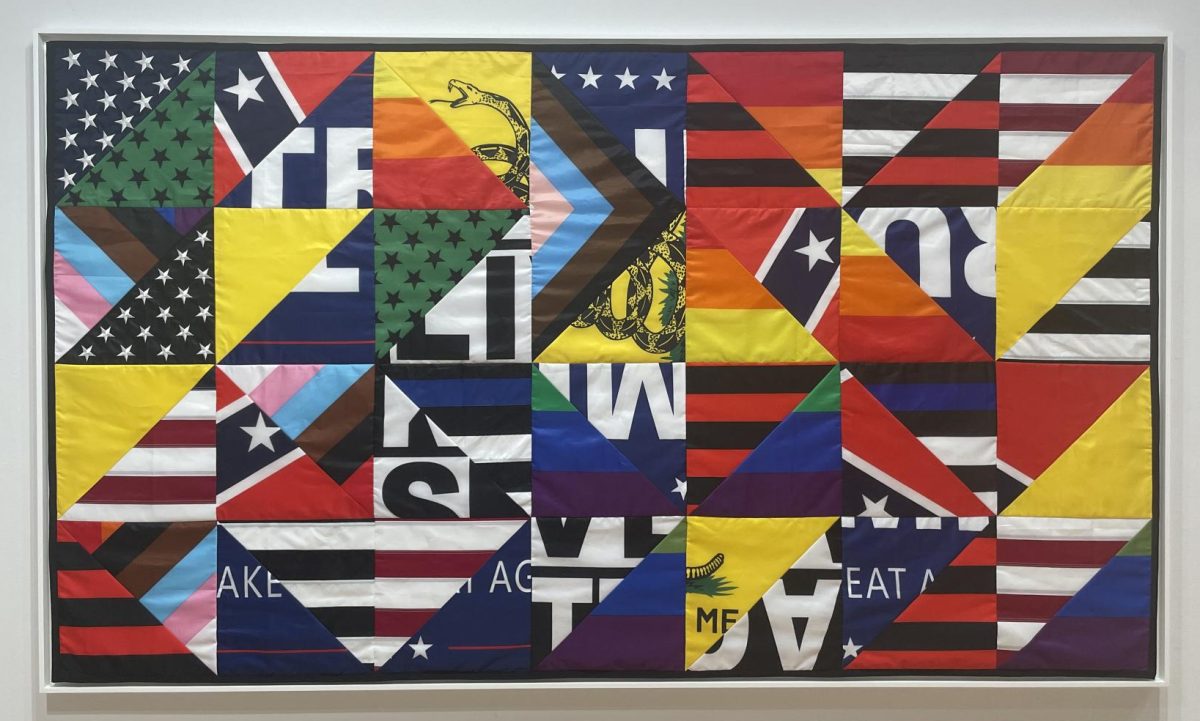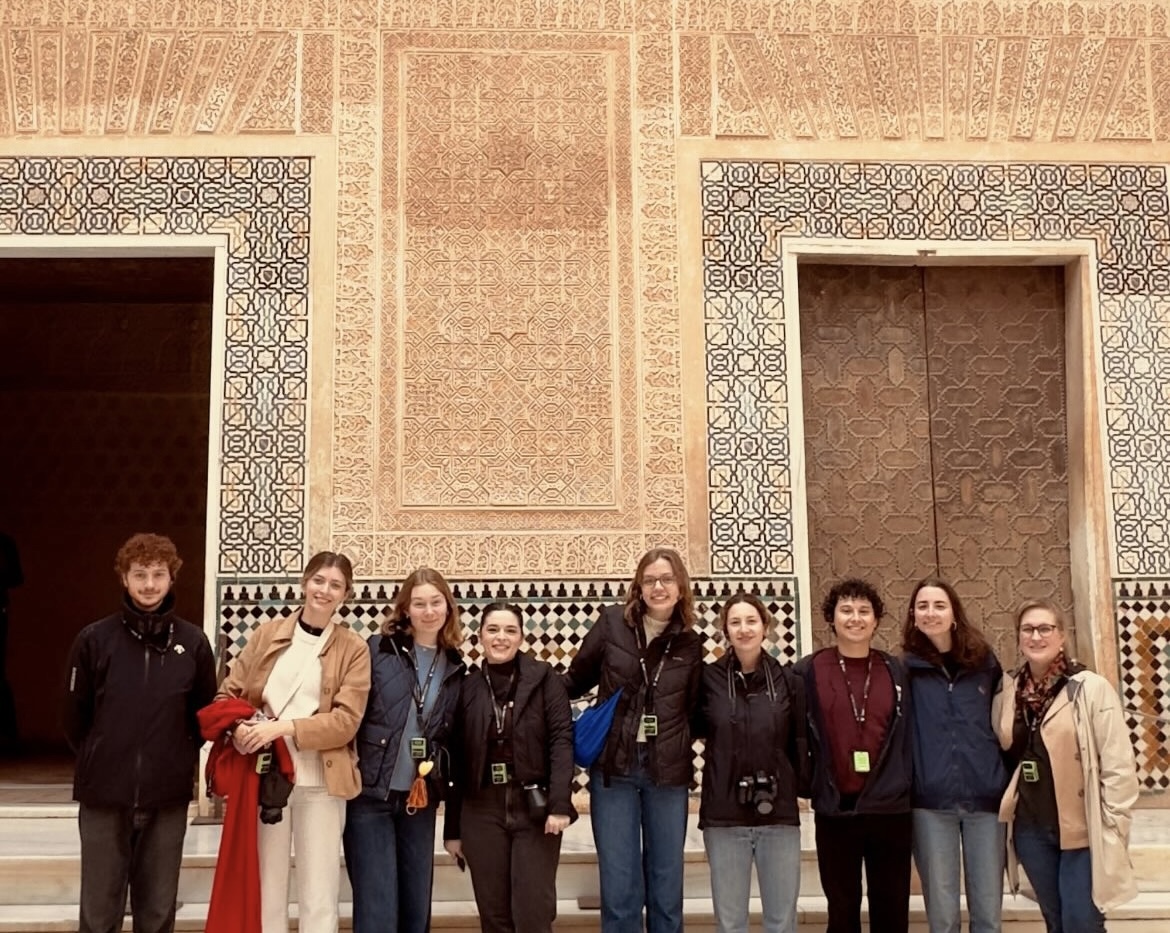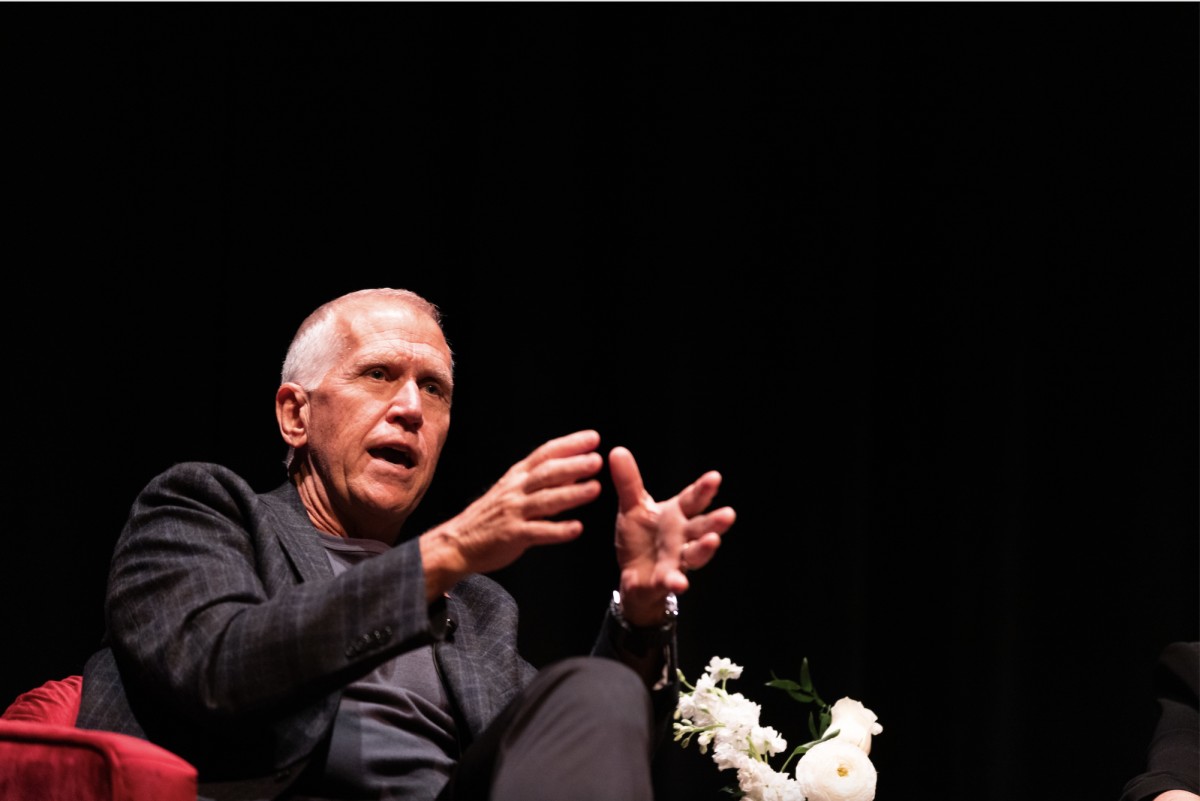Barber Theatre became a site of gothic horror and female retaliation this past weekend with “Dracula: A Feminist Revenge Fantasy, Really,” a play written by Kate Hamill that reimagines Bram Stoker’s classic novel through a feminist lens. In this production, directed by Associate Professor of Theatre Mark Sutch, the women of “Dracula” are fierce, witty and refuse to be silenced.
The Davidson production transforms the classic Victorian myth into something transgressive and culturally relevant. A female Van Hesling replaces the traditionally male character and leads the fight against Dracula, subverting the original story’s patriarchal foundation. Through gory blood effects, close combat and dark comedy, the play asks what it means for women to become formidable in search of justice.
In this adaptation of “Dracula,” English businessman Jonathan Hacker’s trip to Transylvania draws him into the Count’s plan for domination, sparking a sense of horror that follows him back to England. There, his wife Mina cares for her friend Lucy who is possessed by Dracula, while Lucy’s husband Dr. Seward observes Renfield, a bug eating “mad woman” since she was first targeted by Dracula.
When the fierce Van Helsing arrives, she recognizes that to save them all, Dracula must be destroyed. The rest of the play follows Lucy, Mina and Van Hesling as they unite to confront the manipulative and violent vampire.
In Stoker’s classic tale, male characters “save” women from corruption and death, while female characters are mere victims or symbols of sin derived from the Victorian imagination. Hamill’s play subverts this dynamic entirely. Women seek revenge rather than waiting to be rescued, and become the messengers of the play’s main themes. The defeat of Dracula is possible only through the determination and wisdom of its female protagonists.
The cast began their intense rehearsal practice in September with help from fight scene and intimacy coordinators, who guided them through the production’s demanding physical and emotional scenes. The show is gritty and visceral, featuring moments of vampiric neckbiting, seductive female monsters and frequent physiological unraveling. A nine-person cast performing on an intimate stage setup required deep trust amongst actors to come to fruition.
Julia Holt ’28 played three characters: Dracula’s wife Druscilla, a miller and a merchant. Working with an intimacy coordinator was a new experience for Holt. “[Scenes with them] were definitely kind of awkward at first, just weird and out of my comfort zone. But after doing it multiple times you get really used to it, and the cast was always just having fun and laughing throughout the whole process,” Holt said.
While the play is extremely physical, it also focuses on speech as a source of power and control. Initially, male characters do not believe women about their violent and, violating encounters with Dracula, a dynamic that echoes contemporary conversations about the ongoing tendency to doubt women who speak out about sexual assault and other forms of gendered violence. As the women resist Dracula’s control, the play becomes a fight not just against Dracula, but against the patriarchal power structures that silence his victims.
Scenic designer Dolph Orthwein ’26 brought the world of “Dracula” to life with a creepy set that felt both decayed and alive. Dracula’s castle is at once corroding and seeping with dynamic special effects like unexpected blood and startlingly immersive lighting. Designed with the Barber Theater’s small space in mind, the production uses a single, versatile set that transforms smoothly from scene to scene.
“I definitely started with a more castle-like aesthetic, and then moved into this more concrete, dirty, broken away facade, and really tried to represent the underlying darkness of the story. I really wanted to feel the grime and the grunge of the place was infecting the people who were living in it,” Orthwein said.
Orthwein’s creative vision was incredibly effective. The fog seeping from under the stage and flickering lights contribute to the increasingly eerie and hysterical mood in the space. Seated so close to the stage, the audience sometimes found themselves implicated in the unfolding madness.
As the audience is caught in the midst of fake blood spurts, and characters emerge from between the bleachers and even sit amongst them, viewers are drawn into the same feverish anger that propels the plot.
The production successfully balances dark comedy and serious themes. Much of the humor of Dracula’s character is derived from his resemblance to real people, despite his obvious fantastical nature. “[Kate Hamill] humanizes Dracula by making him so much like people we may have met in our life—kind of charming, but at the same time, creepy and predatory. So a lot of the humor comes from ridiculing aspects of his character,” Sutch said.
“We’re kind of moving back cyclically—not entirely, but somewhat—to an era where women didn’t have quite the number of options they once did,” Sutch continued. “Some of those same questions about people’s stations and opportunities seem to be up in the air again. So even though the play is set 140 or 150 years ago, the way the playwright frames those issues feels scarily relevant right now.”
The horror of the production is derived not simply from its creepy setting and bloody gore, but from the ways in which Dracula’s control mirrors real world systems of power.
“They make a big point to show that Dracala could be like a natural evolution, not just some cool creature,” Holt said.
In an age of ongoing debates that decenter women’s perspectives and remove female autonomy, like that over reproductive rights and women’s place in the workforce, Lucy and Mina’s struggle to be heard feels extremely relevant. Dracula’s chilling wrath, meanwhile, echoes anxieties about frightening authoritarian tendencies and the consolidation of power in American politics.
“Monsters are among us, even if they are not immediately apparent, and maybe even everyone has the capacity for monstrousness,” Sutch concluded.



